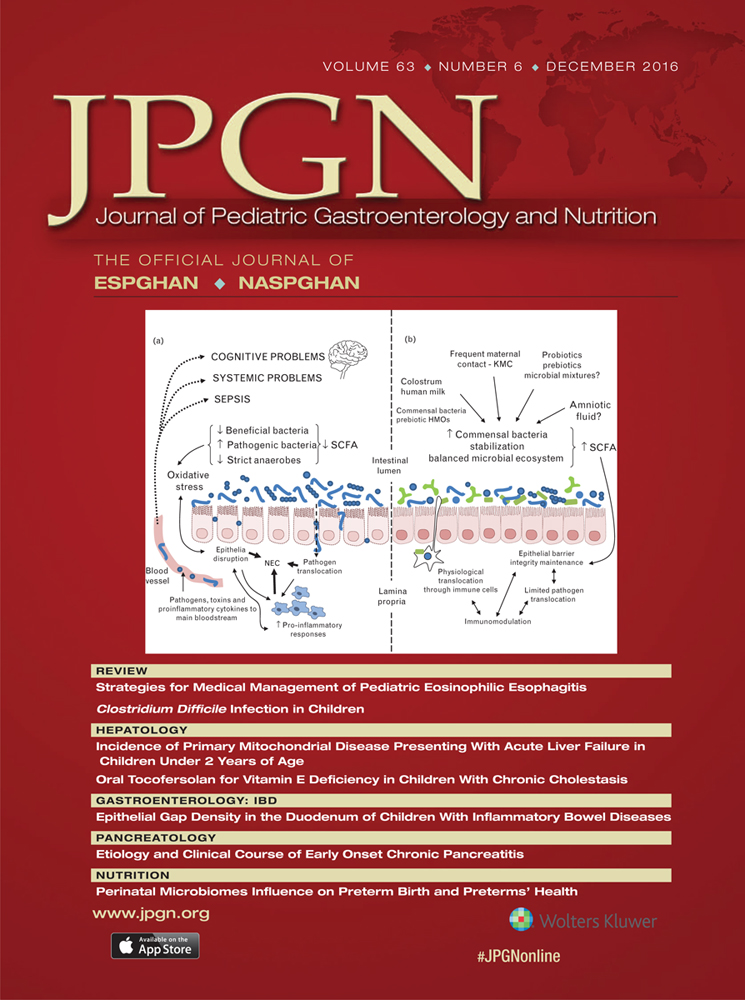Increased Epithelial Gap Density in the Noninflamed Duodenum of Children With Inflammatory Bowel Diseases
This work was supported by grants from the Women & Children's Health Research Institute, University of Alberta, and Alberta Innovates-Health Solutions. EW was supported by the Centre of Excellence for Gastrointestinal Inflammation and Immunity Research at the University of Alberta and the Alberta Inflammatory Bowel Disease Consortium, which was supported by an AIHS Interdisciplinary Team Grant. DZ is the recipient of a Graduate studentship from WCHRI.
The authors report no conflicts of interest.
ABSTRACT
Objectives:
Inflammatory bowel diseases (IBD) present commonly in childhood, with unknown etiology, but an important role for the epithelial lining is suggested. Epithelial cell extrusion, measured by counting gaps between epithelial cells, is higher in adult patients with Crohn disease (CD) than in controls. Our objectives were to compare epithelial gaps in the duodenum of IBD and non-IBD pediatric patients, to study the correlation between epithelial gaps, inflammation, and disease activity, and identify potential mechanisms.
Methods:
Epithelial gap density of the duodenum was evaluated using probe-based confocal laser endomicroscopy in 26 pediatric patients with IBD (16 CD, 10 ulcerative colitis [UC]) and 17 non-IBD controls during endoscopy. Epithelial gaps were correlated with serum inflammatory markers, disease activity indices, and intraepithelial lymphocytes. A panel of 10 inflammatory cytokines and expression of TNFAIP3 (A20; inhibits NF–κβ-induced inflammation) were analyzed in duodenal and ileal biopsies.
Results:
Confocal imaging showed significantly higher epithelial gap density in patients with IBD, including UC. Interleukin (IL)-2 and IL-8 were higher in duodenal but not ileal biopsies of patients with UC. No significant correlation was present between C-reactive protein, erythrocyte sedimentation rate, disease activity indices, and epithelial gaps in patients with UC. In patients with CD, C-reactive protein positively correlated with epithelial gaps. A20 expression in the duodenum was unchanged among non-IBD and IBD cases.
Conclusions:
Duodenal epithelial gaps are increased in pediatric patients with IBD (including UC) but are unrelated to inflammation. This suggests that altered epithelial barrier is an important systemic feature of pediatric IBD and is not only secondary to inflammation.




